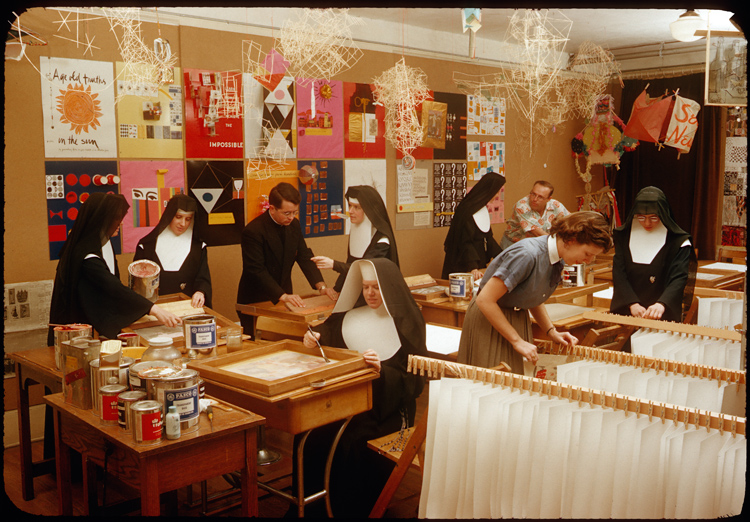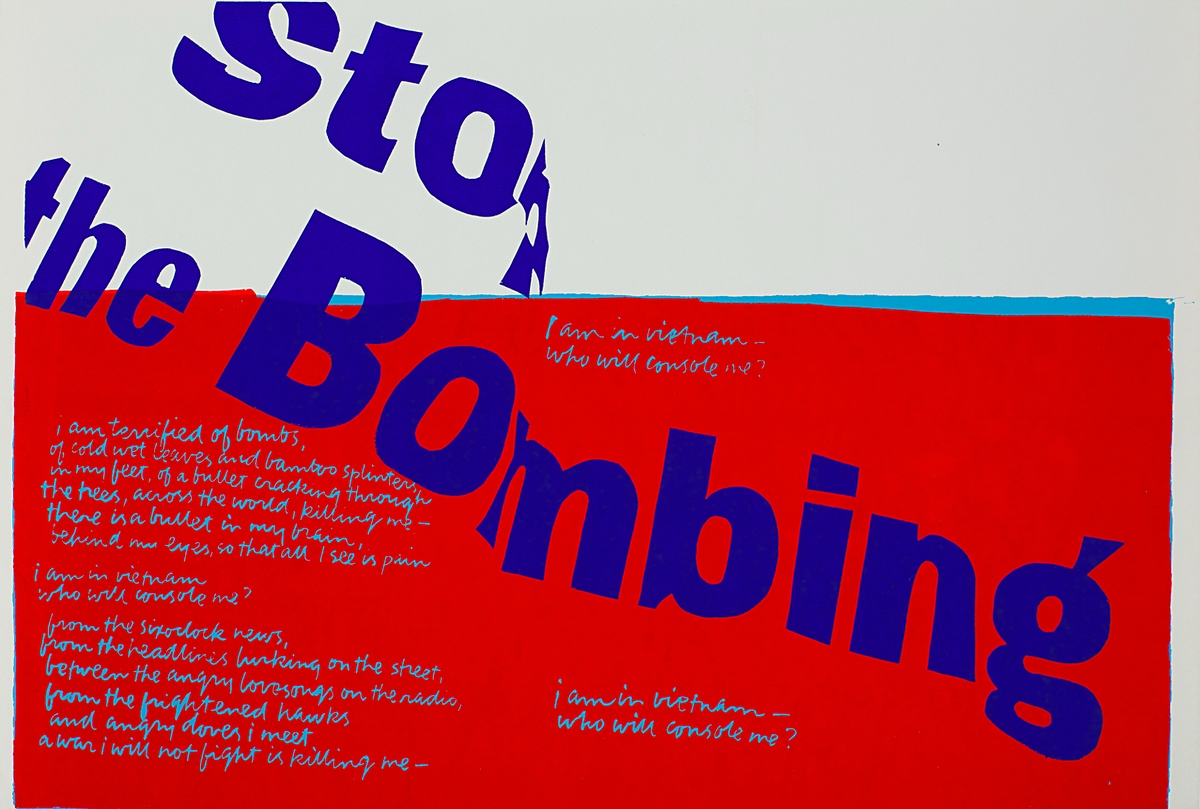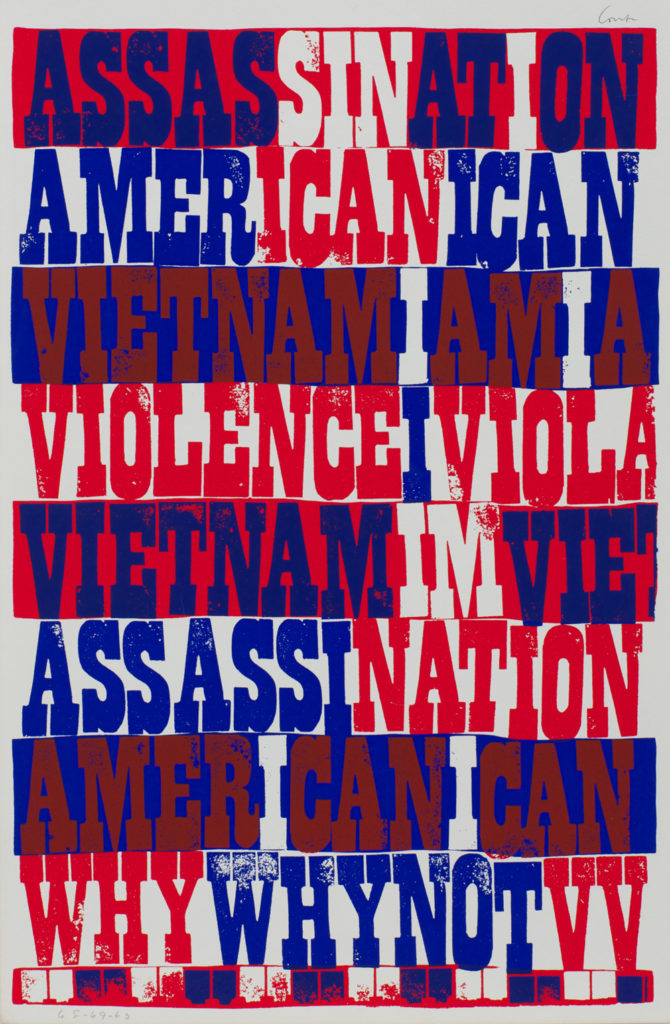News + Blog
Corita Kent: The Joyous Revolutionary
By Andrea Fisher
I love a good nun story. Corita Kent (1918-1986) was an artist. She also happened to also be a Catholic nun.
At the young age of 18, Corita committed herself to the church under the Order Immaculate Heart of Mary. Nun though she was, she continued to study, receiving her BA at Immaculate Heart College before going on to graduate school at the University of Southern California. Corita went on to teach, becoming chair of the Immaculate Heart College Art Department.

Courtesy of Ditchling Museum of Art and Craft
Influenced by medieval art as well as by the contemporary pop art scene, Corita’s work evolved from figurative to bold and graphic. Many of her works incorporate advertising images, slogans, and song lyrics. Indeed, Corita counted Andy Warhol, the don of Pop Art himself, as one of her great inspirations. Nonetheless, she maintained a style entirely her own and embraced a democratic approach to her practice. Corita did not, for example, number the editions of her work; to do so, she believed, would artificially betray a certain hierarchy between identical versions of the same print.
Throughout the 1960s, Corita’s work became increasingly political, as she took on themes like poverty, racism, the Vietnam war, gender inequality and social injustices. The exploration of these themes was, at times, met with friction by the Catholic Church. In 1968, Corita left the religious order and returned to secular life. The Immaculate Heart eventually broke from the church as well. Continuing to exist as a lay organization, the former Order, which is based in Los Angeles, has grown to include The Corita Art Center to preserve and promote her teachings, art, and legacy.

While on the faculty of Immaculate Heart College, Corita developed her 10 Rules for Students, Teachers and Life. These rules were created to serve as encouragement and guidance, and half a century later, they still do.
Rule Number Seven: “The only rule is work. If you work it will lead to something. It’s the people who do all of the work, all the time who eventually catch on to things.”
Rule Number Ten, the final rule, borrowed from John Cage: “We’re breaking all of the rules. Even our own rules.”
And there is no question that the works themselves feel incredibly fresh and relevant today. Created in 1968, the same year that she left the Church, “American Sampler” evokes the graphics and political charge of works by contemporary artists Glenn Ligon, Barbara Kruger, and Jenny Holzer.
With an election around the corner, let us all “Get with the Action” and “Give a Damn” – it’s what Corita would have wanted.






